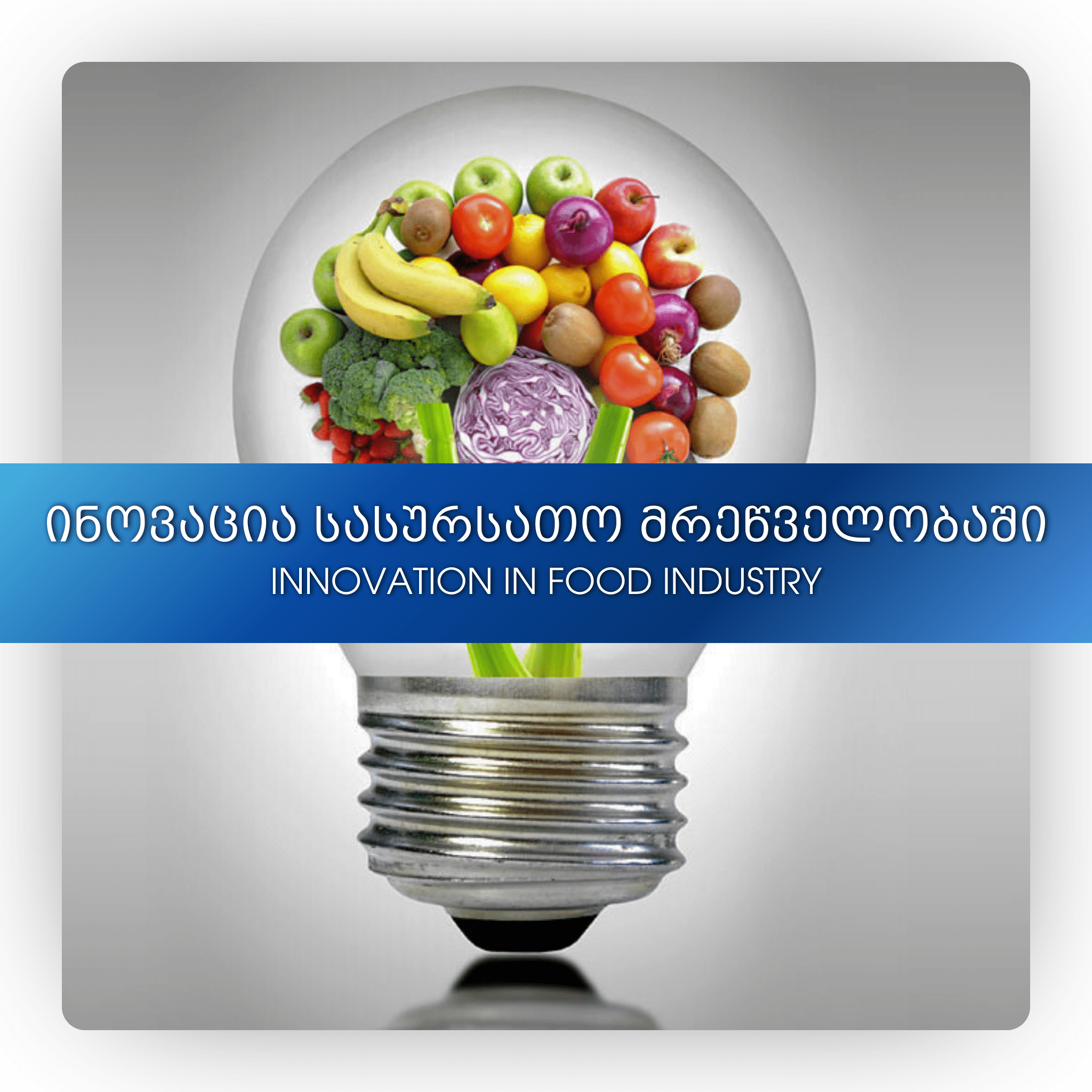Innovation In Food Industry
A prerequisite for the viability and functioning of any business is continuous development. The company must focus on innovation planning and their successful implementation.
Innovation is an organized, predetermined and practical activity through which a company creates new value that is different from what is already in the market in order to meet new customer requirements.
Innovation is a three-step process:
◾️ determination of the opportunity;
◾️ Open opportunity development through due process;
◾️ Taking it to the market.
There are 3 basic types of innovation:
◾️ Product innovation - the simplest form;
◾️ Process innovation - product production technology innovation;
◾️ Service innovation - innovative companies that offer customers a certain service instead of a specific product.
There may be several reasons for innovation:
Technology
Technological progress in turn has given impetus to various kinds of innovation. For example, the Internet has enabled small and independent food business operators to develop and grow their businesses through various websites and online commerce.
Clients
Customer demand and needs are constantly changing. A good example of this is the so-called "ageing" of the population in the United Kingdom, so businesses, including the food industry, will have to adapt to changing consumer categories and their needs.
Business environment
The business environment includes constant changes in legislation, local and international economics. All these are factors that the organization cannot control, however, under their influence, it is possible and sometimes necessary to implement changes in the organization. In such situations, companies prefer to reduce investment in innovation because of the risks associated with it, although studies show that companies that continue to invest in innovation are more successful.
Competition
Due to the increasing nature of competition, companies must constantly think about development in order to overcome the challenges posed by the local and international market. The food industry, be it retail or manufacturing, must adapt, and innovation is the way to gain a foothold and overcome competition.
The following types of actions can be considered as innovation in the food industry:
◾️ Creation of a new product;
◾️ Creation of a new type of existing product (new raw material or semi-finished product, new taste);
◾️ Using a new method of producing or selling a product;
◾️ utilization of a new source of supply of raw materials or semi-finished products;
◾️ A new enterprise, a company that manufactures a product already on the market.
Innovation may be:
Radical - creates something completely new, completely different from what has already been achieved. Radical innovation is rare, but its impact is substantial.
Step-by-step - refers to the modernization of an existing product or process. Most innovation, about 70%, is incremental. With its support, it is possible to create a technologically new product, the intended use of which may be fundamentally new. It should be noted that the new product created by technological influence belongs to radical innovation, and the product created by market influence belongs to gradual innovation.
Disruptive - the process of transforming an expensive or highly sophisticated product or service into something simpler, more affordable, and accessible to a wider population. This type of innovation focuses on the results of the change. This often destroys established industries.
There are 3 types of innovative companies:
Integrator - manages each process himself and has a substantial budget. It is convenient if the technology has already been approved, the target consumption is defined, and it is not necessary to immediately place the product on the market.
Licensor - patent innovator companies that do not own information about the user and infrastructure. This strategy is used by the company when technologies change quickly and the risk is high.
Conductor - after defining the goals, uses the partner company to complete the tasks. This is how successful innovations are created. In the described way, we reach open innovation (combination of external and internal resources), during which cooperation may be established with universities, start-ups, inventors or key suppliers. A good example of open innovation is the Senso coffee machine, the idea of which was born between a coffee company and a company selling coffee machines. As a result, small coffee capsules were created, the use of which allows the user to prepare coffee quickly.
In addition to open innovation, there is co-innovation, which is based on using and communicating with the customer when making changes and introducing innovation, which significantly increases the chances of success in the market.
Innovation and conservatism:
When a completely new product is introduced and presented, the consumer hesitates to purchase the product due to "familiarity" in most cases. Therefore, instead of introducing a completely new product, it is advisable to innovate a familiar product using new ingredients and manufacturing processes.
When introducing an innovation, it is important to consider at which stage of the consumer's consumption of the product this innovation should have an impact. For example, when an innovation is related to the pre-consumption stage, any information related to communication before making a decision is very important. A good example of this is the "Share Coca-Cola" campaign. The essence of the idea was to make the product more "personal".
Another phase of innovation is related to the moment of purchase. Here 2 factors can be considered: choice and personal experience. In the first case, the company directly offers the customer a specific product created by it, for example a pizza, with certain ingredients placed on it. And in the second case, the company allows the customer to decide the product's features, for example, the customer's choice of pizza toppings.
Another phase is the direct consumption process. In this case, the company tries to introduce innovation at the product consumption stage. An example of this is the so-called "dinner in the sky", during which the table is suspended in the air. Georgia also joined this practice.
As for the post-consumer innovation, at this time the company conducts different types of incentive events (eg sweepstakes) so that the company can attract new customers.
